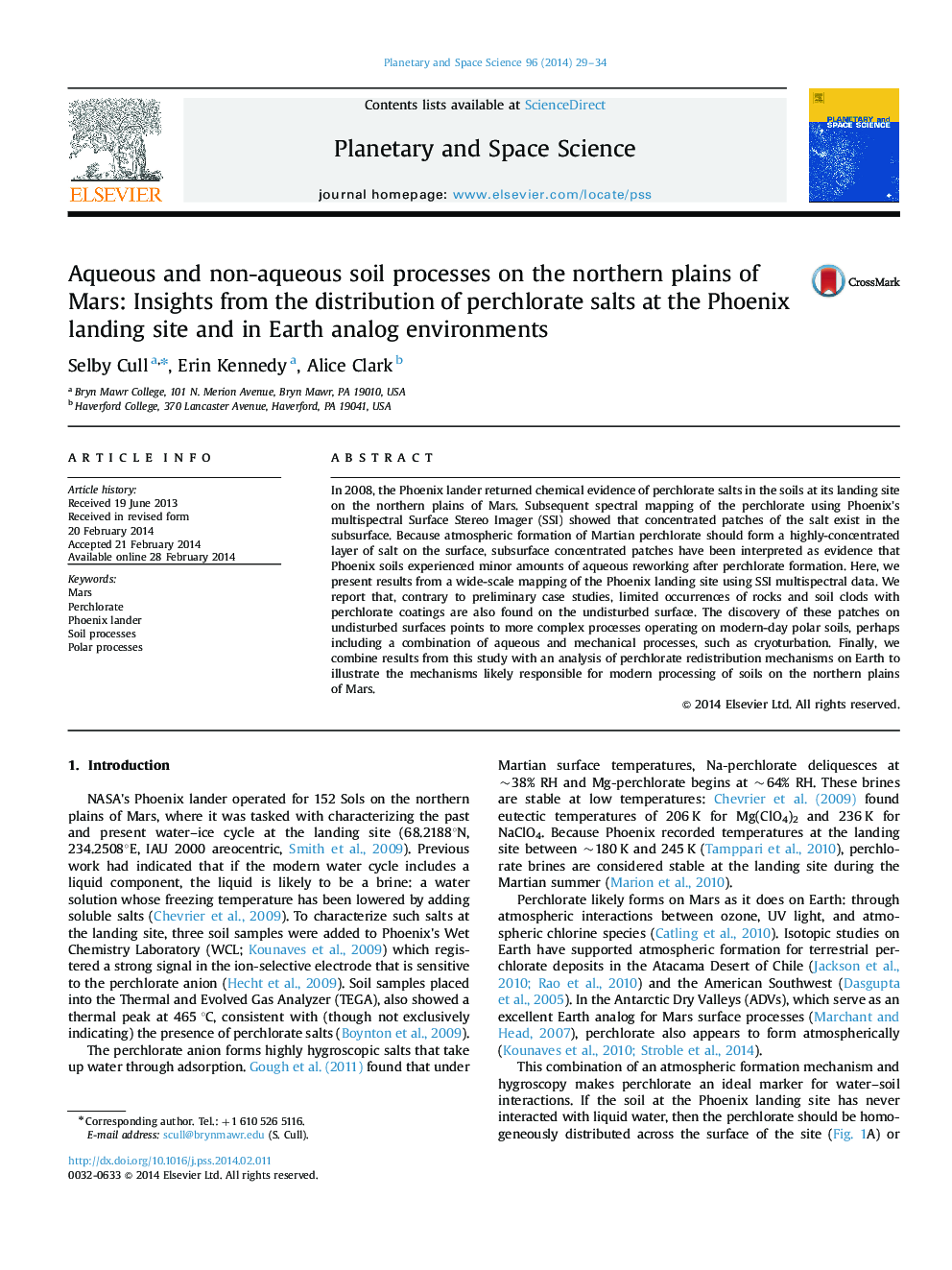| Article ID | Journal | Published Year | Pages | File Type |
|---|---|---|---|---|
| 8143767 | Planetary and Space Science | 2014 | 6 Pages |
Abstract
In 2008, the Phoenix lander returned chemical evidence of perchlorate salts in the soils at its landing site on the northern plains of Mars. Subsequent spectral mapping of the perchlorate using Phoenix׳s multispectral Surface Stereo Imager (SSI) showed that concentrated patches of the salt exist in the subsurface. Because atmospheric formation of Martian perchlorate should form a highly-concentrated layer of salt on the surface, subsurface concentrated patches have been interpreted as evidence that Phoenix soils experienced minor amounts of aqueous reworking after perchlorate formation. Here, we present results from a wide-scale mapping of the Phoenix landing site using SSI multispectral data. We report that, contrary to preliminary case studies, limited occurrences of rocks and soil clods with perchlorate coatings are also found on the undisturbed surface. The discovery of these patches on undisturbed surfaces points to more complex processes operating on modern-day polar soils, perhaps including a combination of aqueous and mechanical processes, such as cryoturbation. Finally, we combine results from this study with an analysis of perchlorate redistribution mechanisms on Earth to illustrate the mechanisms likely responsible for modern processing of soils on the northern plains of Mars.
Related Topics
Physical Sciences and Engineering
Earth and Planetary Sciences
Geophysics
Authors
Selby Cull, Erin Kennedy, Alice Clark,
